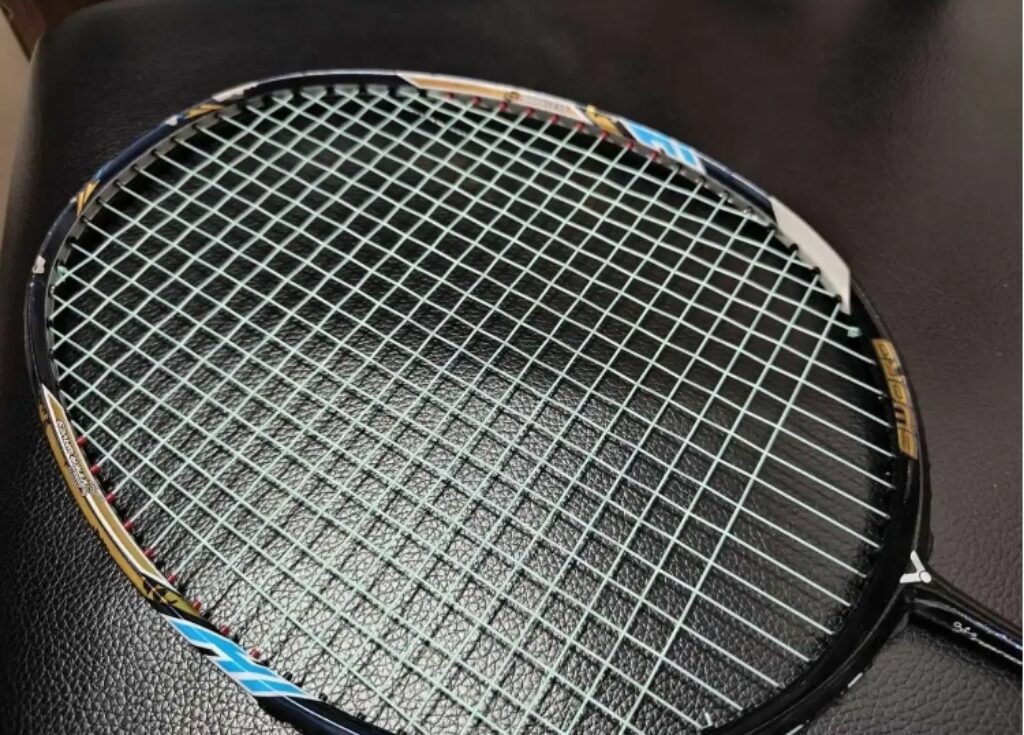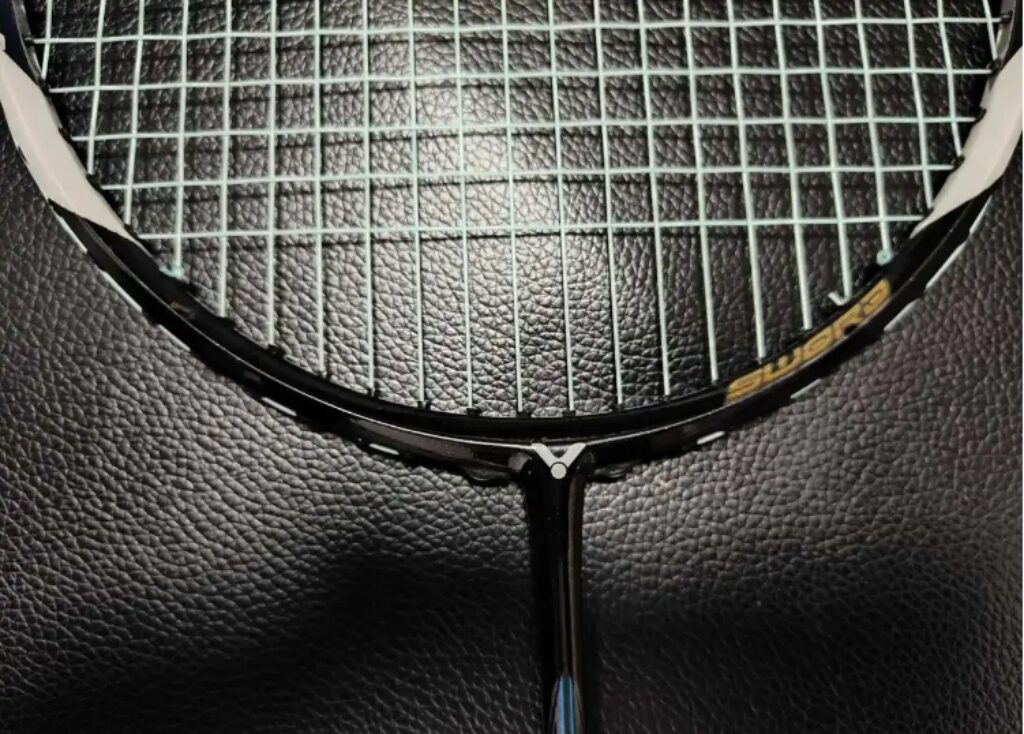A truly remarkable racket, I have encountered many top players who have used various rackets, and almost all of them have left me thinking, “They actually liked using this kind of racket.”
This one perfectly fits my almost stereotypical understanding of Daoist Long.

Specifications: 3UG5, without the bottom cap, total weight 92.5g in used condition, balance point 300mm, 7.0mm middle shaft, length 220mm, moderate to high stiffness, diamond-cut wind frame, 72-hole string bed, 9-3 o’clock string grooves, warranty 28lbs, strung with 25-27lbs KT66F.
This is a highly attractive weapon, extremely so. The deep black base paint instantly elevates the racket’s premium feel. The LHI on the middle shaft already indicates its exceptional background. The frame’s paint design is symmetrical, with minimal stickers on the wings but extending from 2 o’clock to 5 o’clock. The gold stickers at 3 and 9 o’clock, and the blank spaces at 4 and 8 o’clock, prevent it from being too flashy. The sharp lines give it an elegant sense of layering. After not having handled a Liangjian frame for a long time, I now notice that the 12 o’clock position is indeed very thin. The wind-breaking treatment is as sharp as ever, but this leads to the LHI suffering from poor paint durability, making it prone to chipping, especially on the racket’s head—such a pity for such a high-quality appearance.

The racket’s tendency to hit the frame before adapting makes its fate even more doomed. The frame’s sharpness and thinness, combined with its high swing speed, make it challenging for many to adjust to initially. This seems to be an inherent trait of the Liangjian series that people both love and hate. Additionally, the low ball feel and the wood-like hitting sensation due to outdated material technology are also characteristic.

Surprisingly, compared to the more rigid and violent Liangjian 11R/12, the LHI, as a signature racket for singles players, is somewhat softer. The racket’s wings use vibration-damping string grommets and inner waves structure, effectively lowering the force threshold. It seems that Daoist Long’s Tai Chi style does not require such hardcore equipment for support.
So, is the LHI violent? Not at all. On the contrary, aside from a somewhat unappealing feel (neutral), the racket is very gentle, to the point that some players find it too soft.

In flat drives, it continues the series’ excellent performance. The current LHI, being a 4U version, can quickly switch in response to sudden flat drives from midcourt, effectively handling challenging shots like those to the back or under the arm—very agile. Although it was originally a singles player’s racket, it is actually quite suitable for doubles play—more so, in fact.
Initially, I found the racket’s relative neutrality puzzling, but as I continued to use it, the quality of this top-spec Liangjian left me in awe.

Those familiar with Li Xuanyi’s playing style will recognize it: fluid and Tai Chi-like. In high-level matches, it’s challenging to force him into a particularly passive position, and he doesn’t often show much aggression in prolonged rallies. However, once there’s a crack in the opponent’s patience, he seizes the opportunity to strike decisively. The atmosphere of unknown timing for a sudden attack is quite intimidating.
The LHI indeed embodies this style.
Its lightness gives it a sense of keeping up in various rhythm battles. When you feel you can increase the pace, the LHI’s high swing speed and strong continuity allow you to immediately ramp up the pace with added pressure or flat drives. When slowing down is needed, the large racket head and sweet spot provide ample tolerance, making it easy to defend against continuous down-pressure shots and disrupt the opponent’s rhythm with changes in direction and backcourt control.

Its friendliness allows for spontaneous offensive timing. Daoist Long’s later career rarely featured heavy smashes, but his ability to deliver sharp and effective shots with just a slight lift is formidable. Even without full body rotation or preparation, the racket can deliver a lethal down-pressure shot through the small joints’ explosive power, enhancing the sense of sudden attack.
In terms of control, the racket’s performance is also impressive. The larger racket head aids in controlling net play, and for advanced players with consistent actions, the LHI’s lightweight makes successful smashes, net shots, and lifts more achievable and threatening. Additionally, its ability to compress the backswing allows for more varied handling of backcourt shots, whether it’s a smash, flat shot, or drop shot—highly deceptive. The racket’s elasticity and torsional resistance may be lacking compared to current models, but its control and attacking versatility remain surprisingly effective.

This is a racket that becomes more enjoyable the more you use it. On the court, it feels like everything is under control in the midst of the battle.

Leave a Reply